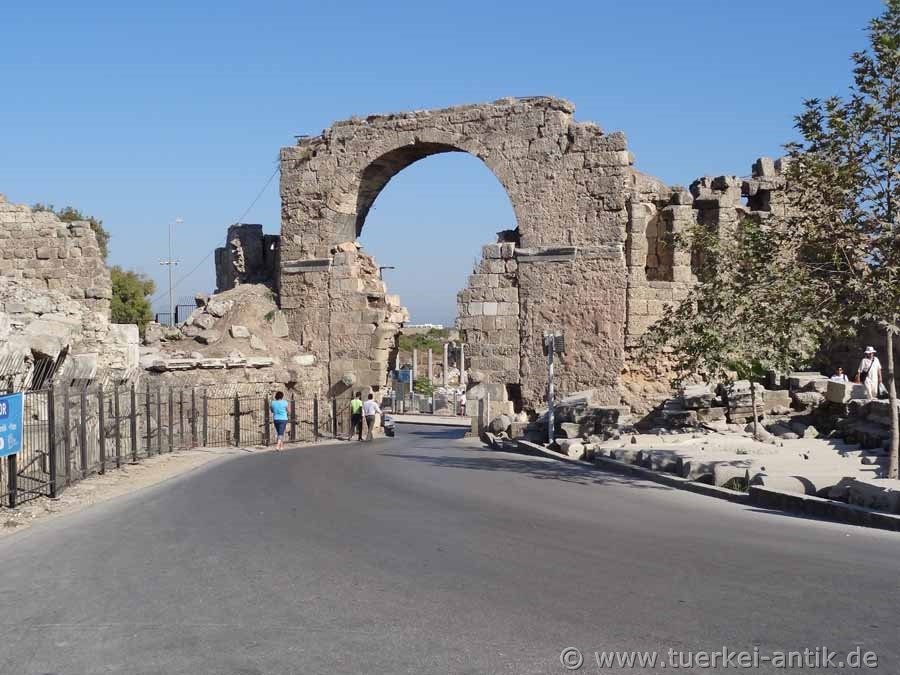 |
| The history of Side |
 |
|
|
|
||
 |
|
|
|
The ancient Side is situated on a flat peninsula with harbour facilities at the tip. According to ancient tradition, Side was founded around the 7th century BC. The most important ruins date from the Roman epoch, the 2nd and 3rd centuries AD. Other important buildings were built when Side became a bishop's seat in the 5th or 6th century. The town was probably abandoned in the 10th century. An earthquake destroyed many buildings. Side is one of the oldest cities on the Turkish south coast. It is assumed that the first settlement of the peninsula already took place in the 2nd millennium BC. The name of the city comes from an ancient Anatolian language and means "pomegranate" (Turkish: Nar) The pomegranate also adorns coins minted from the 5th century BC onwards. By the expansion of the port Side rose in Hellenistic time to a prosperous and important commercial metropolis with about 40,000 inhabitants. At the beginning of the 1st century the city fathers arranged themselves with the Cilician pirates and Side became an important slave market. The income from the slave market was finally lost after Pompeius put an end to piracy in 67 BC. In the course of history, the city flourished as part of the Roman province of Pamphili and experienced a period of prosperity until the middle of the 3rd century AD. The wealth of this time is documented by generous buildings, temples and boulevards. These buildings still shape the image of the ancient city today. However, the inner city wall, for example, testifies to the fact that the period of peace was only of relatively short duration. With the collapse of the Roman Empire, Side also experienced its decline. In particular, the siltation of the port contributed to this. One gave up a large part of the city and withdrew into the city area within the walls. It was not until the 5th and 6th centuries that people settled again outside the city walls. Especially the up-and-coming Antalya attracted people. Already in the 3rd century A.D. an active Christian community in Side was reported. Files of the Christian trials from the times of the emperor Diocletian prove this. In Byzantine times, Side was elevated to the status of a bishop's seat, but the city never regained its former importance. |
||
| Photo: @chim | ||
|
Translation aid: www.DeepL.com/Translator |
||
| Source: Wikipedia and others |
|
|
